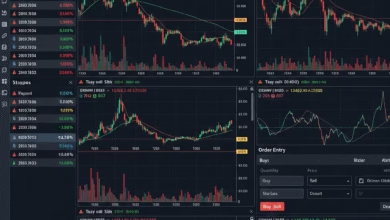What does it mean to be bought or sold on the stock market?
Have you ever heard of the term being bought or sold in the financial market?

If you’ve spent any time researching stock market investing, you’ve probably encountered terms like “going long” or “going short.” These phrases might sound like jargon, but they describe fundamental trading positions that every investor should understand. Knowing the difference between being long and being short is crucial, whether you’re a beginner or an experienced trader. This article will demystify these concepts, explaining what they mean, how they work, and why investors choose one over the other.
Understanding the “Long” Position: Betting on Growth

The most common way to invest in the stock market is to take a long position. This is what most people think of when they buy stocks.
The Core Concept of Being Long
When you are long a stock, it simply means you own shares of that company. You buy shares with the expectation that their price will increase over time. If the price goes up, you can sell your shares for a profit. If the price goes down, you’ll incur a loss if you sell. Being long is essentially betting on the company’s growth, success, or overall market appreciation.
How Long Positions Work
Imagine you buy 10 shares of Company X at $50 per share. You’ve just taken a long position.
- If Company X’s stock price rises to $60 per share, your investment is now worth $600 (10 shares x $60). You’ve made a $100 profit ($600 – $500 initial investment).
- If Company X’s stock price falls to $40 per share, your investment is worth $400. You’d have a $100 loss if you decided to sell.
Most long positions are held for the long term, sometimes years, allowing time for the company to grow and the stock price to appreciate.
Deciphering the “Short” Position: Profiting from Declines

Being short a stock is the opposite of being long, and it’s a more complex and riskier strategy.
The Idea Behind Going Short
When you are short a stock, you are betting that its price will decrease. How do you profit from a falling stock price? You do this by borrowing shares that you don’t own, selling them at the current market price, and then buying them back later at a lower price to return them to the lender. This process is called short selling.
How Short Selling Works Step-by-Step
Let’s say you believe Company Y’s stock, currently trading at $100 per share, is overvalued and will fall.
- Borrow Shares: You borrow 10 shares of Company Y from your broker.
- Sell Borrowed Shares: You immediately sell those 10 borrowed shares in the market at $100 each, receiving $1,000.
- Wait for Price Drop: If you’re right, and the price of Company Y falls to $80 per share.
- Buy Back (Cover) Shares: You then buy 10 shares of Company Y at $80 each for a total of $800.
- Return Shares: You return the 10 shares to your broker.
Your profit is the difference between the selling price ($1,000) and the buying price ($800), minus any fees or interest paid for borrowing the shares. In this example, it’s $200.
The Risks and Rewards of Short Selling

While short selling offers the opportunity to profit when the market goes down, it comes with significant risks.
Unlimited Loss Potential
This is the biggest risk. When you are long, your maximum loss is limited to the amount you invested (the stock can only go to $0). However, when you are short, there is no theoretical limit to how high a stock price can go. If Company Y’s stock, in our example, went up to $200 instead of down, you would have to buy it back at $200 to return it, leading to a much larger loss.
Margin Calls
To short sell, you typically need a margin account and must maintain a certain amount of capital (margin) with your broker. If the stock price rises significantly, your broker might issue a margin call, requiring you to deposit more funds to cover potential losses. If you can’t, your broker can close your position, potentially at a significant loss.
Interest and Fees
You usually have to pay interest or fees to your broker for borrowing the shares, which eats into your potential profits.
When Do Investors Go Long or Short?

The decision to go long or short depends heavily on an investor’s market outlook and risk tolerance.
Going Long: For Growth and Stability
- Bullish Outlook: Investors go long when they believe a company, industry, or the overall market will increase in value.
- Long-Term Strategy: It’s often associated with buy-and-hold strategies, aiming for compounding returns over extended periods.
- Lower Risk (Relative): While all investing has risk, the maximum loss is limited to your initial investment.
Going Short: For Speculation and Hedging
- Bearish Outlook: Investors go short when they anticipate a decline in a stock’s price, perhaps due to poor company performance, industry challenges, or a broader economic downturn.
- Hedging: Some investors use short selling to hedge (protect) their existing long positions against potential market downturns.
- High Risk/High Reward: It’s a more speculative strategy often used by experienced traders due to its unlimited loss potential.
Key Takeaway: Know Your Position

In summary, being long means you own a stock and profit if its price goes up. Being short means you’ve borrowed and sold a stock, hoping to buy it back cheaper later and profit from a price drop. While going long is common for most investors seeking growth, short selling is a more advanced strategy with higher risks and rewards, used to capitalize on declining prices. Always understand the implications of each position before making any investment decisions.




